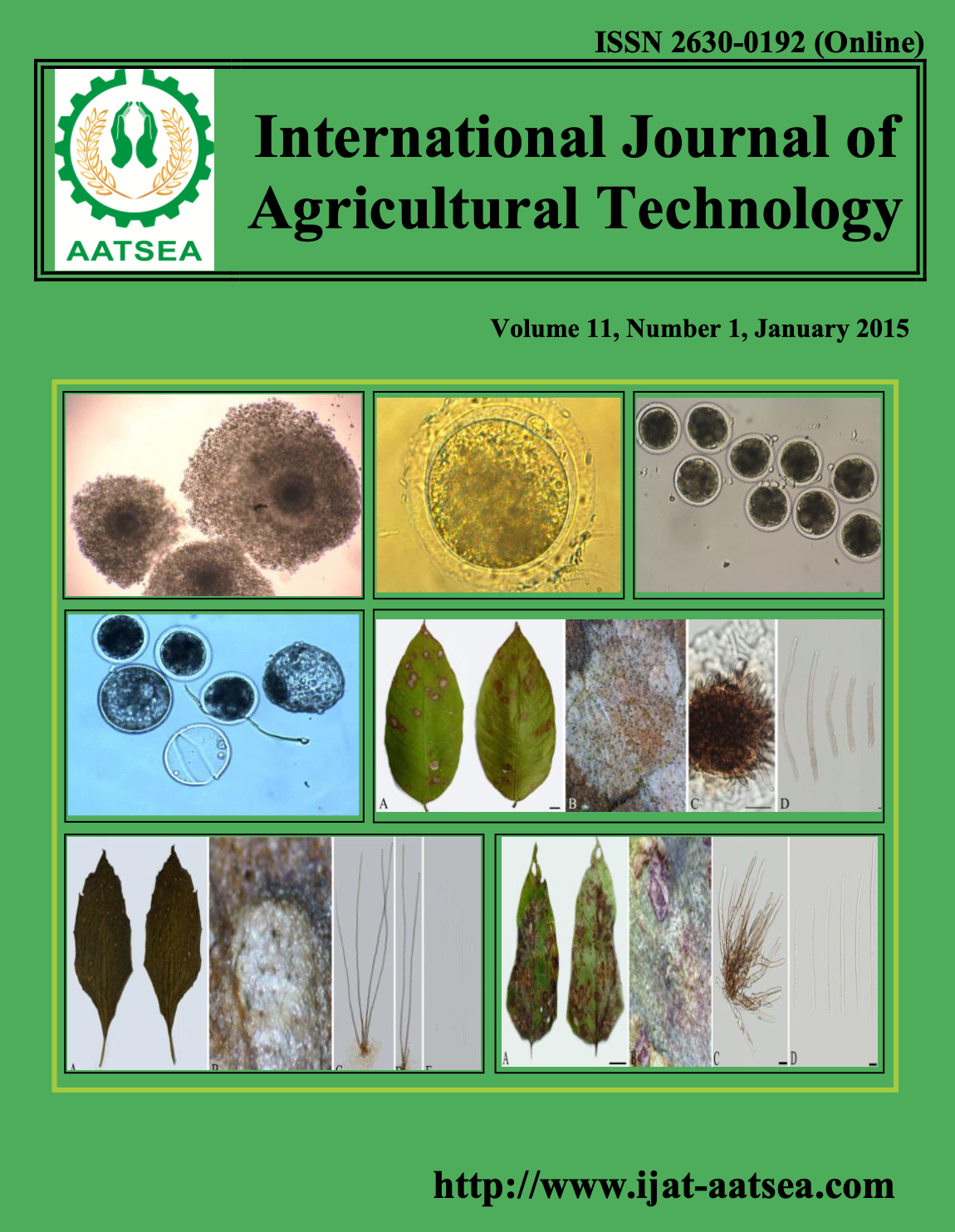Assessment of field performance and genetic diversity analysis of tissue culture variants of strawberry
Main Article Content
Abstract
Article Details

This work is licensed under a Creative Commons Attribution-NonCommercial-NoDerivatives 4.0 International License.
References
Adak, N., Pekmezci, M. and Gubbuk, H. (2001). Investigations on propagation of different strawberry cultivars by meristem culture. Akdeniz Universitesi Ziraat Fakultesi Dergisi 14:119-126.
Ara, T., Haydar, A., Mahmud, H., Khalequzzaman, K. M. and Hossain, M. M. (2009). Analysis of the different parameters for fruit yield and yield contributing characters in Strawberry. International Journal of Sustainable Crop Production 4:15-18.
Barcelo, M., EI-EI-Mansouri, L., Mercado, J. A., Quesada M. A. and Alfaro, F. P. (1998). Regeneration and transformation via Agrobacterium tumefaciens of the strawberry cultivar chandler. Plant Cell, Tissue and Organ Culture 54:29-36.
Biswas, M. K., Islam, R. and Hossain, M. (2008). Micro propagation and field evaluation of strawberry in Bangladesh. Journal of Agricultural Technology 4:167-182.
FAOSTAT. (2007). Derived from data supplied by FAOStat, food and agricultural organization, United Nations. Retrieved from http://faostat.fao.org/site/567/default. aspx.
FAOSTAT. (2008). Derived from data supplied by FAOStat, food and agricultural organization, United Nations. Retrieved from http://faostat.fao.org/site/567/default. aspx.
Jimenez-Bermudez, S. and Redondo-Nevado, J. (2002). Manipulation of strawberry fruit softening by antosense expression of a pectate lyase gene. Plant Physiology 128:751-759.
Kumar, A., Avasthe, R. K., Rameash, K., Pandey, B., Borah, T. R., Denzongpa, R. and Rahman, H. (2013). Influence of growth conditions on yield, quality and diseases of strawberry (Fragaria x ananassa Duch.) var Ofra and Chandler under mid hills of Sikkim Himalaya. Scientia Horticulturae 130:43-48.
Lynch, M. and Walsh, B. (1998). Genetics and analysis of quantitative traits. Sunderland, Massachusetts: Sinauer. pp. 823-831.
Mahalanobis, P. C. (1936). On the generalized distance in statistics. Proceedings of the National Institute of Science of India 12:49-55.
Miller, P. A., Willams, C., Robiwson, H. F. and Comstock, R. E. (1958). Estimates of genotypeic and environmental variance and covariance and their implication in section. Agronomy Journal 50:126-131.
Passey, A. J., Barrett, K. J. and James, D. J. (2003). Adventitious shoot regeneration from seven commercial strawberry cultivars (Fragaria x ananassa Duch.) using a range of explant types. Plant Cell Reports 21:397-401.
Popescu, A. N., Isac, V. S., Conran, M. S. and Radulescu, M. S. (1997). Somaclonal variation in plants regenerated by organogenesis from callus culture of strawberry (Fragaria x ananassa). Acta Horticulturae 439:89-95.
Sakila, S., Ahmed, M. B., Roy, U. K., Biswas, M. K., Karim, R., Razvy, M. A., Hossain, M., Islam, R. and Hoque, A. (2007). Micropropagation of strawberry (Fragaria x ananassa Duch.) a newly introduced crop in Bangladesh. American-Eurasian Journal of Scientific Research 2:151-154.
Singh, S. R., Sundouri, A. S., Sharma, M. K. and Srivastava, K. K. J. (2000). Correlation and path analysis of yield and its components in strawberry (Fragaria x ananassa Duch.) Journal of the American Society for Horticultural Science 125:324-329.
Stvensson, M. and Johanson, L. (1994). Anther culture of Fragaria x ananassa: Environmental factors and medium components affecting microspore divisions and callus production. The Journal of Horticultural Science 69:417-426.
Utz, H. F. (2007). PLABSTAT (Version 2N), A computer program for the computation of variances and covariances. Institute of plant breeding, seed science, and population genetics, University of Hohenheim, Stuttgart, Germany. Retrieved from http://www.uni-hohenheim.de/ipspwww/soft.html
Rao, C. R. (1952). Advance statistical method in biometrical research. American Journal of Physical Anthropology 12:268-270.


